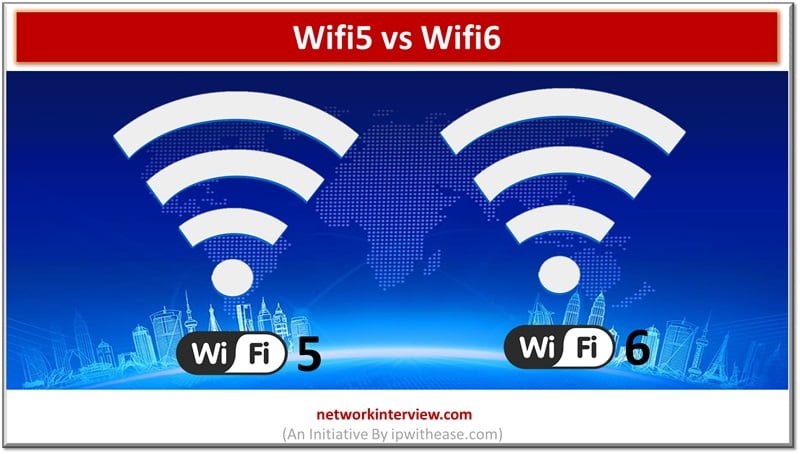
WiFi5 vs WiFi6: Which Network Support is Right for You?
Choosing the right WiFi standard can significantly impact your internet experience.
In this article, we’ll explore the differences between WiFi5 vs WiFi6 to help you determine which network device support is right for you. Understanding these differences will help you make an informed decision, whether you’re setting up a new network or upgrading an existing one.
Speed and Performance
One of the main differences between WiFi5 vs WiFi6 is their maximum data transfer speeds.
WiFi5: A Reliable Workhorse
WiFi5 made some big upgrades over WiFi4. It was faster, had better range, and handled lots of devices more smoothly. With speeds up to 3.5 Gbps, WiFi5 was a game-changer for homes and businesses. It runs on the 5 GHz band, cutting down interference for a more stable connection.
WiFi6: The Next Generation
WiFi6 builds on what WiFi5 provides and kicks it up a notch. With speeds of up to 9.6 Gbps – almost three times faster than WiFi5, it’s a game-changer. Perfect for 4K streaming, gaming, and virtual reality. Plus, WiFi6 rocks on both 2.4 GHz and 5 GHz bands, making it awesome in busy spots.
Efficiency and Capacity
Another major difference between WiFi5 and WiFi6 is their efficiency and capacity.
WiFi5: Solid Performance
WiFi5 brought in MU-MIMO (Multi-User, Multiple Input, Multiple Output) tech, letting many devices chat with the router at once. It was a big jump from the old standard that managed just one device. Yet, with more gadgets connecting, WiFi5 started feeling the strain.
WiFi6: Designed for the Modern World
WiFi6 takes WiFi5 up a notch with some cool new tech. For example, there’s this thing called OFDMA (Orthogonal Frequency Division Multiple Access) that helps the router break channels into smaller bits. This means more devices can jump on without any lag. And, WiFi6 boosts battery life for gadgets with Target Wake Time (TWT).
Related: What is the difference between WiFi 6 and WiFi 6E?
Security Enhancements
Another significant improvement of WiFi6 is its enhanced security features.
WiFi5: WPA3 Support
WiFi5 backs WPA2 security, which has been the go-to for years. But as cyber threats rise, we need stronger security. WiFi5 gadgets can now rock WPA3 with updates, beefing up protection vs. brute-force attacks and boosting encryption.
WiFi6: Built-In WPA3
WiFi6 includes WPA3 security protocol as a standard feature, ensuring that all WiFi6 devices come with the latest security features right from the start. This means a more secure network setup. WPA3 provides stronger encryption and improved protection against password-cracking attempts.
Compatibility and Future-Proofing
One of the main concerns with upgrading to WiFi6 is compatibility with existing devices.
WiFi5: Established and Widely Used
WiFi5 is super popular and works with a ton of devices. It’s a solid choice for good performance without needing all the newest bells and whistles. Many devices, like older smartphones, laptops, and smart home gadgets, are all set up to work smoothly with WiFi5.
WiFi6: Preparing for the Future
If you want to future-proof your network, WiFi6 is the go-to choice. It’s built to handle the growing number of devices in homes and offices. Opting for WiFi6 partnered with an Ubiquiti Access Point U6 Plus, guarantees your network can handle new tech and faster speeds.
WiFi5 vs WiFi6 – Which Is Right for You?
Choosing between WiFi5 vs WiFi6 comes down to what you need. If you’ve got tons of devices and want top internet speed with the latest security, go for WiFi6. But if you just need a solid, widely compatible network, WiFi5 is still a great pick. Think about what you need now and down the road to pick the best fit for you.
The below given comparative account of features will help you to choose the one:
| Feature | WiFi 5 (802.11ac) | WiFi 6 (802.11ax) |
| Release Year | 2014 | 2019 |
| Maximum Speed | Up to 3.5 Gbps | Up to 9.6 Gbps |
| Frequency Bands | 5 GHz | 2.4 GHz and 5 GHz |
| Channel Width | 20, 40, 80, 160 MHz | 20, 40, 80, 160 MHz |
| Modulation | 256-QAM | 1024-QAM |
| MU-MIMO | Downlink MU-MIMO (multi-user, multiple-input, multiple-output) | Uplink and Downlink MU-MIMO |
| OFDMA | Not supported | Supported (Orthogonal Frequency Division Multiple Access) |
| Latency | Higher latency | Lower latency |
| Battery Efficiency | Standard | Improved (Target Wake Time feature) |
| Number of Streams | Up to 8 spatial streams | Up to 12 spatial streams |
| Range | Standard | Improved (due to better modulation and coding) |
| Security | WPA2 | WPA3 |
Download the comparison table: WiFi5 vs WiFi6
WiFi 6 introduces several enhancements over WiFi 5, such as higher data rates, improved efficiency, reduced latency, and better performance in crowded environments. These improvements make WiFi 6 more suitable for modern demands like streaming high-resolution video, online gaming, and supporting multiple devices simultaneously.
Keep going! Feel free to delve into our wide array of articles covering various topics.
Tag:wireless



